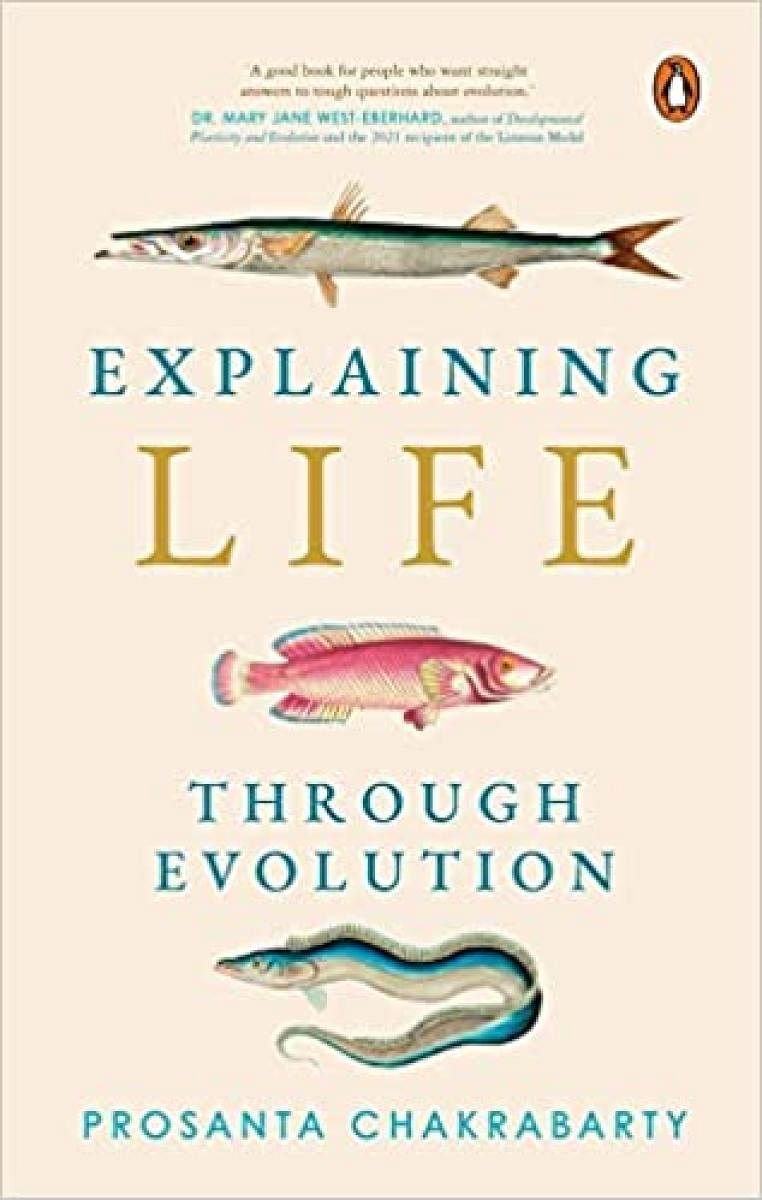
Prosanta Chakrabarty, evolutionary biologist and professor of ichthyology at Louisiana, State University, USA addresses one of the “big questions” that scientists try to answer — the evolution of life on earth. For this big question, his answer is packed in just about 160 pages, followed by 50 pages of useful glossary and an extensive bibliography. This is partly because Explaining Life Through Evolution introduces the reader to the subject, paints the broad outlines and is much like a mind map. As with all mindmaps, the curious reader would have to satisfy her or his curiosity with enchiridions that would certainly have more detailed expositions of this rapidly evolving subject. I must be excused for my (weak) pun, but am tempted to use it because the author loses no opportunity to deliver good puns in his text. Even though new facts come to our attention almost every day, there is still much that is unclear about the vagaries of life and evolution. But evolution, undoubtedly, is a fact and not merely a theory as some naysayers would suggest.
Chakrabarty makes many things clear to even those, who like me, have been following the progress in our understanding of the fascinating process of evolution. For instance, how do those animals who do not reproduce fit into the evolutionary cycle? (Read the book to find out!) Later, he clarifies that — unfortunately — evolution is simply a process without a predefined and necessarily beneficial endpoint. Again, he points out that there are more classified types of beetles than bacteria for the simple reason that the external appearances of beetles are easy to distinguish, unlike in bacteria! Also, he informs us that mutations are not random, as is commonly believed — and that most mutations are not harmful. Clearly, there is often a method to this apparent madness.
A bird’s-eye view
Chakrabarty deals with evolution in the broadest sense of the word and goes well beyond the formation and extinction of life (‘the tree of life’ is a recurring phrase in the book) on earth.
He spends an entire chapter towards the end elaborating on LGBT, sexuality and gender. CRISPR, the Nobel prize-winning discovery also makes its appearance in the book. The current age, the Holocene is also being termed the Anthropocene, as the earth is undergoing “the sixth extinction” — but this is an artificial (human-made) selection, and not a natural selection and thus is a violation of nature’s law, he states.
Small wonder then that George Schaller, the pathbreaking biologist states: ‘Obviously humans are evolution’s greatest mistake’ (a provocative phrase that Chakraborty misses out on including in his book). The well-known phrase associated with evolution, “Survival of the fittest”, by the way, was a term coined by Herbert Spencer and not by Charles Darwin, as is assumed by most people!
The author makes a passing remark on one of the other “big questions” — is there life elsewhere in the universe? It is clear what his views are, as he states, “I often think that much of alien life, which is most certainly out there somewhere among the trillions of planets and stars, will likely be as boring as the Earth was for its first few billions of years.”
The question of India
India appears in this slim volume, as one might expect from an author who has Indian roots (though he was born in Canada and has lived in the US most of his life). It appears that Indians are more receptive to the idea of evolution, compared to the US, where the theory of creationism still rules in many states. Yet, certain recent pseudoscientific statements made by Indian politicians (and come to think of it, some scientists too, at a Science Congress) are matters of concern.
I would suggest some changes for the next edition. The font, for some of the images, is Lilliputian. Ayurveda is considered akin to homoeopathy in the Intro (sic) to the Indian edition.
Tables on the various paleontological ages on earth would help readers put some phenomena in context. In particular, the use of a metaphor such as the ‘Cosmic Calendar’ created by Carl Sagan (wherein the entire history of the universe is collapsed into 365 days so that specific events can be located on specific dates or moments) would provide an appropriate frame of reference. Now, these suggestions could be considered as part of the evolution of this book!